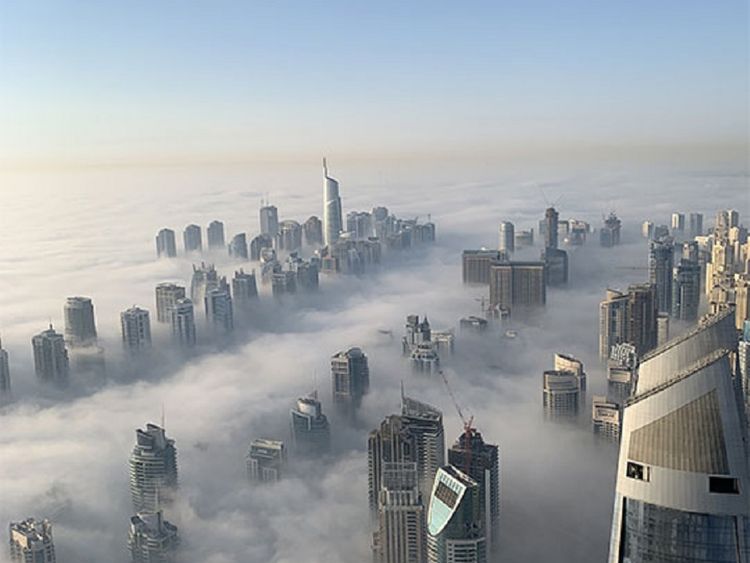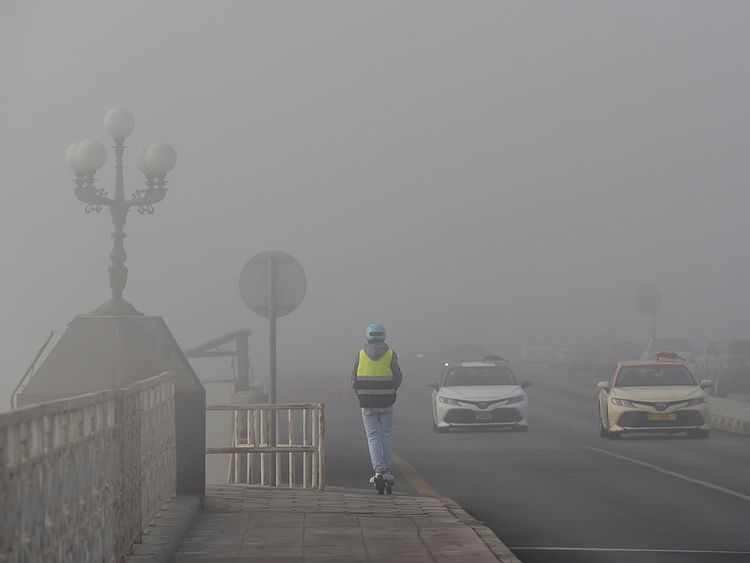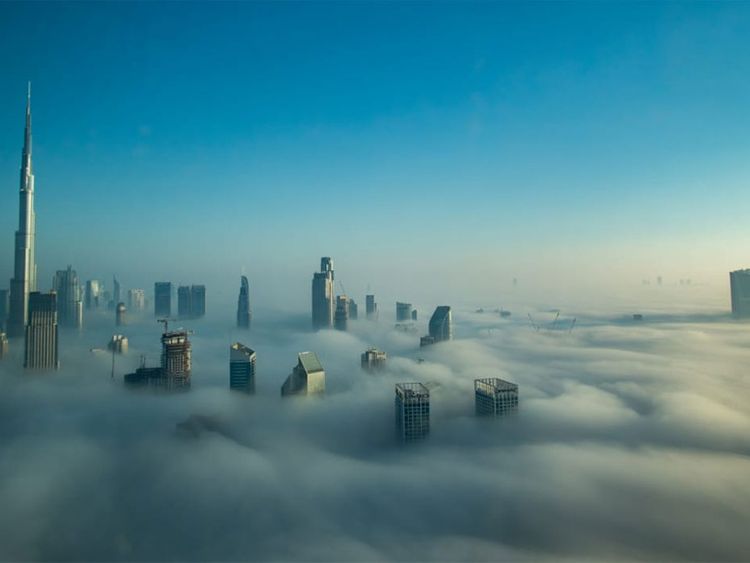People in the UAE woke up to a foggy morning on Tuesday. With a thick blanket of fog keeping the sun out, motorists were forced to navigate roads with poor visibility.
Foggy mornings are an annual feature, but the fog actually begins to settle at night when the humidity rises during winter. Here we are into the season of fogs, which has elicited advisories from the police in Abu Dhabi, Dubai, and Sharjah asking people to take adequate precautions while driving.
The blanket of fog is not unusual for this time of year as perfect weather conditions are currently in play, a meteorologist at the UAE’s National Centre of Meteorology (NCM), said.
Dr Ahmad Habib from the NCM told Gulf News that the country has experienced a significant amount of fog at night that continued well into the early mornings, “or sometimes, the fog can last until late in the morning, like what we have seen these last few days”.
Photos: Monster fog in the UAE and Fog in Dubai from the sky
For heavy fog to form, certain conditions are required, which the UAE is experiencing now.
“There has to be cold, stable weather, high humidity levels close to 100 per cent, maximum wind speeds of 5km/h and high-pressure cooling of the earth’s surface… all these conditions allow for the formation of thick fog in the UAE,” he said.
The Met department on Sunday recorded humidity levels in the internal and coastal areas at 95 per cent and 90 per cent respectively, with temperatures dropping to a chilly 7 degrees Celsius. Humidity levels can reach quite high over the UAE’s 1,300-kilometre coastline that affects 85 per cent of residents, who are all located within several metres of sea level in low-lying coastal areas, according to Environment Agency — Abu Dhabi.
In the UAE, fog tends to originate from the desert and the western areas, mainly in Al Ain and Abu Dhabi. As the fog’s density increases, it expands and covers other parts of the country as it moves towards Dubai.
“Take this week’s incident, for example. At around 11.30 pm on Saturday, the fog started in Sweihan, in Al Ain, and extended to Abu Dhabi and then Dubai. The fog continued well into the next day with road visibility dropping to less than 1,000 metres. In some areas it continued until 10.30 am on Sunday,” Dr Habib said.
The met expert said the fog is unlikely to be a daily occurrence and according to the bureau’s five-day weather forecast, there will be only one more day of mist and fog, “which will be either on Wednesday or Thursday.”
“It is impossible to say how long the foggy weather will continue but it is safe to say that during the cooler climate we are now experiencing, we can expect to see a few more cases of heavy fog during the rest of January,” he added.

What’s fog?
Fog is a suspension of tiny water droplets that appears as a cloud near the ground. It shares similar characteristics with conventional clouds. This common weather phenomenon occurs in most parts of the world.
How does fog form?
The most common form is the radiation fog, which occurs when the earth’s surface cools the humid air above it. When water vapour (from water bodies or from the soil) condenses, it turns into tiny droplets of water that are suspended in the air. A light wind can stir this chilled air to form a dense radiation fog.
Where does fog occur?
Fog usually forms at a time of high humidity or when the temperature is decreasing. It is generally influenced by water bodies (sea in the case of the UAE), wind, and topography.
What are the different types of fog?
Fogs are classified based on the nature of the cooling that causes condensation.
Radiation fog is formed due to the cooling of the Earth’s surface after sunset. It occurs at night and dissolves soon after sunrise.
Ground fog obscures up to 60% of the sky but exists lower than other clouds.
Advection fog is formed when air bearing moisture passes over cool surfaces by the process of advection (horizontal movement of a mass of fluid). This occurs over the sea.
Other types of fog are steam fog, ice fog, hail fog, and precipitation fog.















